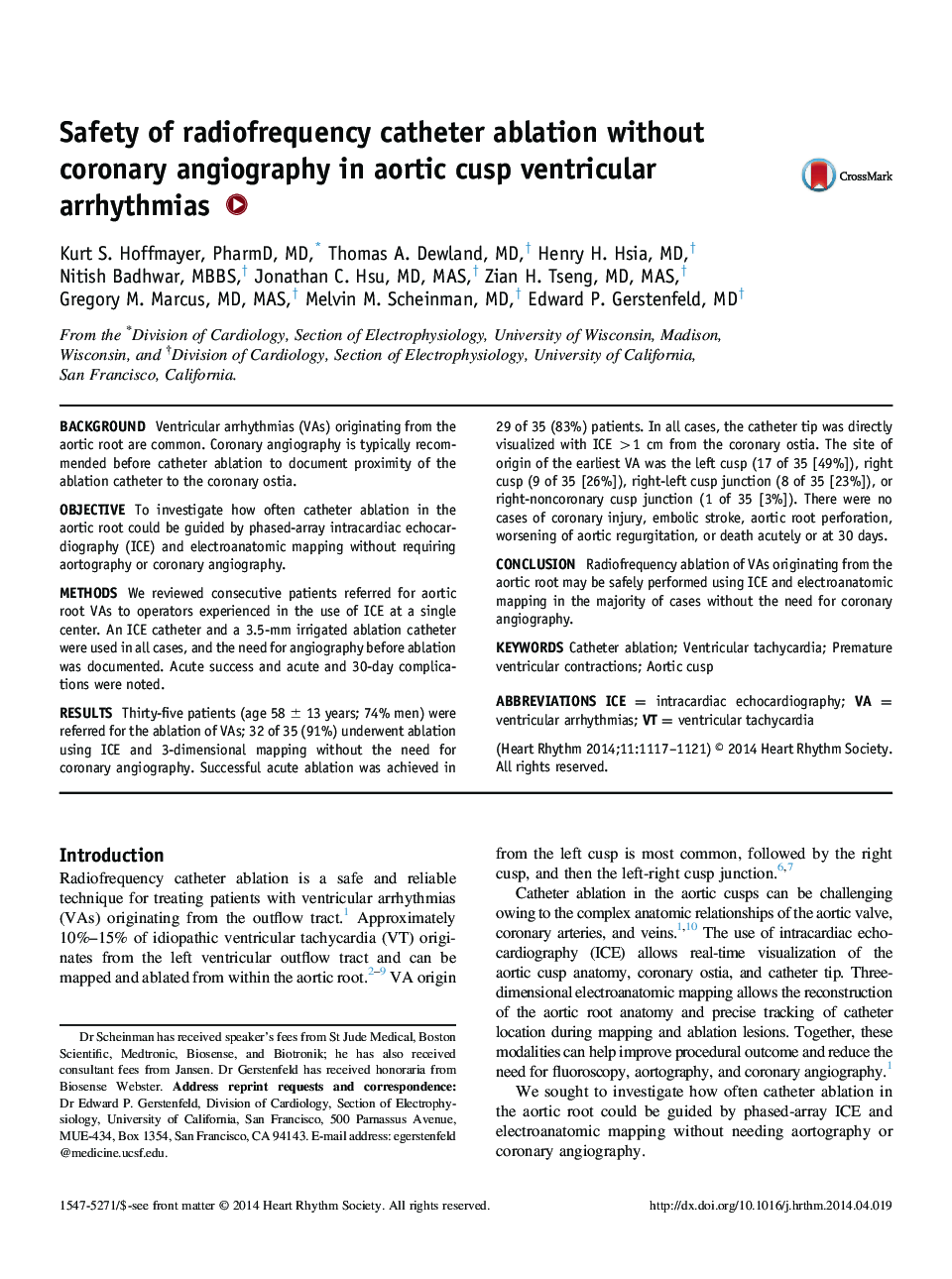| Article ID | Journal | Published Year | Pages | File Type |
|---|---|---|---|---|
| 2921987 | Heart Rhythm | 2014 | 5 Pages |
BackgroundVentricular arrhythmias (VAs) originating from the aortic root are common. Coronary angiography is typically recommended before catheter ablation to document proximity of the ablation catheter to the coronary ostia.ObjectiveTo investigate how often catheter ablation in the aortic root could be guided by phased-array intracardiac echocardiography (ICE) and electroanatomic mapping without requiring aortography or coronary angiography.MethodsWe reviewed consecutive patients referred for aortic root VAs to operators experienced in the use of ICE at a single center. An ICE catheter and a 3.5-mm irrigated ablation catheter were used in all cases, and the need for angiography before ablation was documented. Acute success and acute and 30-day complications were noted.ResultsThirty-five patients (age 58 ± 13 years; 74% men) were referred for the ablation of VAs; 32 of 35 (91%) underwent ablation using ICE and 3-dimensional mapping without the need for coronary angiography. Successful acute ablation was achieved in 29 of 35 (83%) patients. In all cases, the catheter tip was directly visualized with ICE >1 cm from the coronary ostia. The site of origin of the earliest VA was the left cusp (17 of 35 [49%]), right cusp (9 of 35 [26%]), right-left cusp junction (8 of 35 [23%]), or right-noncoronary cusp junction (1 of 35 [3%]). There were no cases of coronary injury, embolic stroke, aortic root perforation, worsening of aortic regurgitation, or death acutely or at 30 days.ConclusionRadiofrequency ablation of VAs originating from the aortic root may be safely performed using ICE and electroanatomic mapping in the majority of cases without the need for coronary angiography.
